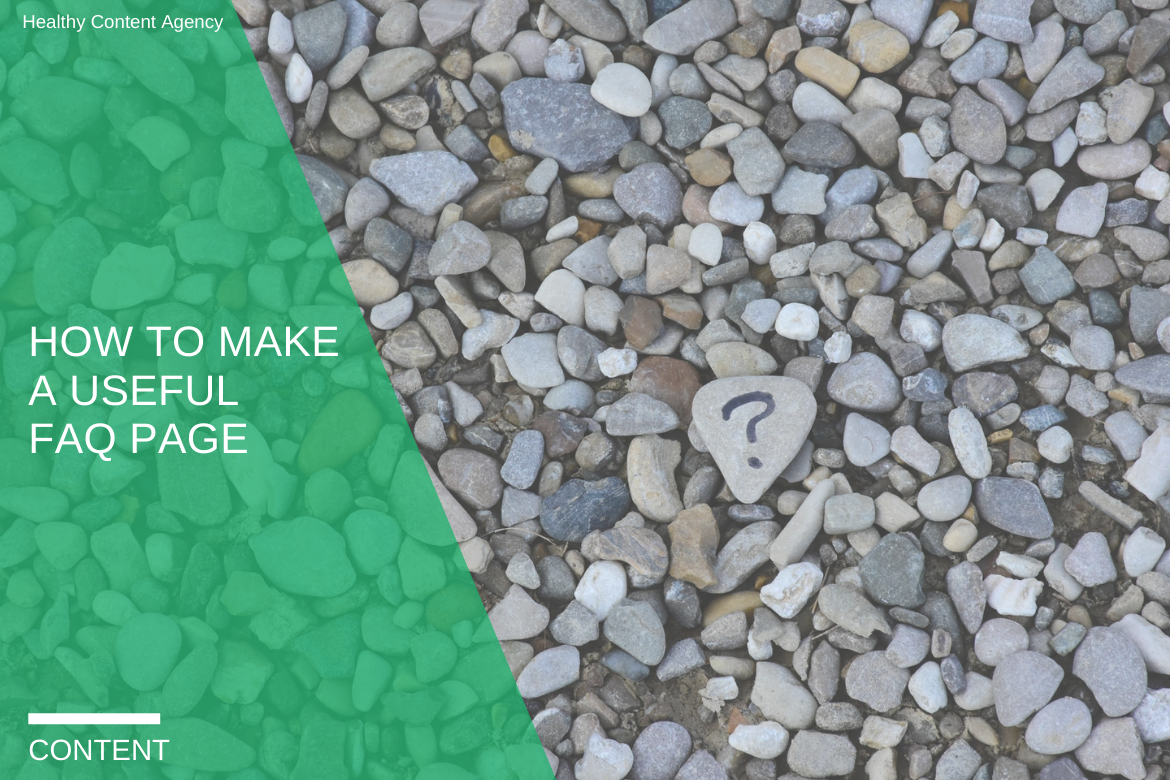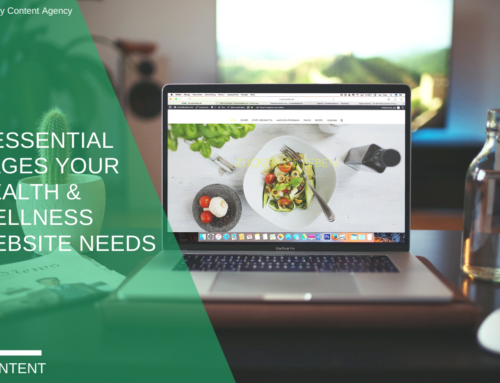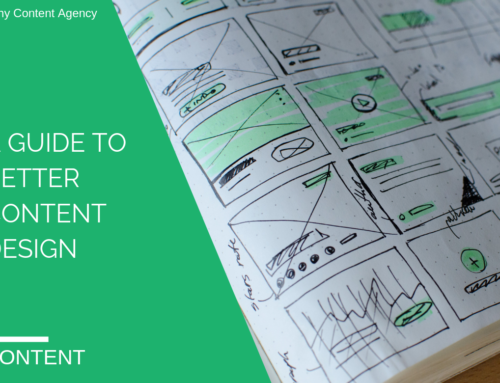How to Make a Useful FAQ Page
A Frequently Asked Questions (FAQ) page might seem like an outdated type of webpage, but done properly, it can be a strategic content marketing approach used not only to genuinely help your customers, but also improve your SEO.
Why Have an FAQ Page?
Put yourself in your customer’s shoes for a moment. When you’re considering buying from a company, or you have recently purchased from a company, and you have a basic question you’re looking for an answer to, what’s the first thing you would do?
You’d Google it and hope that the part of the company’s website that answers this question would show up in the search results.
Or, you’d use the website’s built-in search function. Either way, you’d much rather type it in and get an instant answer rather than having to contact the company directly.
As a customer, contacting the company directly, even if they have a chat or email support function seems like an inconvenience when you know there must be a simple answer. It’s clear that not having the answer readily available on the company website adds unnecessary friction between the customer and their experience with the company.
From this scenario, we can draw two primary reasons to have an FAQ page:
- Improve your customer experience without having to do anything more than publish a page.
- Boost your SEO rankings by providing useful, relevant information that customers are searching for.
If this sounds like a win-win endeavor, then read on to learn how to make a proper FAQ page that your customers will appreciate.
7 Ways to Do FAQ Pages Right
While there isn’t technically a right or wrong way to do web content, there’s always a better and best way. In the old days, FAQ pages consisted of thin, boring, filler content that didn’t serve any other purpose than to be just another indexable page. And because FAQ pages often aren’t given the priority they deserve, these pages are at risk of becoming neglected, accumulating out-of-date information that becomes less useful for the customer over time.
Today, the best FAQ pages are used as a comprehensive customer resource center, incorporating an interlinking strategy that enhances customer interaction with the website.
Think of your FAQ page as your customer’s directory page. It’s a place they can visit for go-to information, not only about the company itself but about sales processes, logistics and other important policies.
To make the most of your company’s FAQ page, it’s important that it be as functional as possible. Below are seven tips for building out your FAQ page.
1. Keep Track of Customer Questions
Treat your FAQ page (and every page, for that matter) as a living, breathing project—you can’t just set it and forget it. You need to return to it regularly, updating it with the latest and most accurate information.
To keep your FAQ page as relevant as possible, you’ll need to actually keep track of your customers’ frequently asked questions. Implement a way of tracking the questions your customers tend to ask, and get your customer service and support teams on board. After all, they’re the ones with direct insight into what it is customers want to know.
2. Write it in Your Brand Voice
When visitors navigate to your FAQ page, it should feel like a natural extension of the rest of their experience on the website. This means, it’s important to carry your brand voice throughout, even, and especially, in content that is otherwise pretty dry, like FAQs.
It’s easy to take it for granted in favor of pages that typically have more personality—like the About page—but FAQ pages are something your customers appreciate and may refer to often depending on how regularly they buy from you. Because FAQ pages are an important customer resource, they’re also an opportunity for your customer to get to know you, meaning maintaining brand consistency is important.
3. Have More Questions With Shorter Answers
When building an FAQ page, don’t forget its purpose—easy, bite-sized questions and answers. It may be tempting to add lots of detailed information to a single answer, but this is not the ideal approach.
Keep the questions as specific as possible so that you have more questions but with shorter answers. This ensures that a customer won’t miss the exact question they’re looking for when it would have otherwise been lumped into a related question.
4. Divide the Page Into General Topics
Sometimes we don’t know the exact information we were looking for until we find it. This is why it’s important to group your questions into general topics.
A customer looking for an answer about your shipping policy might also unknowingly need information about your return policy. If these two related questions weren’t grouped together by topic, the customer might have never thought to inquire about this important subject.
5. Answer Questions About the Industry
As you group questions by topic, don’t forget that the FAQ page is also a place for education and delivering added-value.
Anticipate questions that customers have about the industry you serve, not just about your company and product. Every piece of content, including an FAQ page, is an opportunity to deliver value through knowledge and education.
Are there industry events your company participates in? What about cross-promotions or initiatives your company is involved in? Having this information available in your Q&A directory delivers that much more convenience to your inquiring customers.
6. Be Direct
Customers are on your FAQ page to get answers right now, so it’s important to accommodate. Don’t send customers on a wild goose chase by linking them to other pages. Provide the answer succinctly, while linking to relevant pages should they require more information.
It’s also important to be upfront with your customers. If you know people tend to ask about a particular concern, address it in the FAQ page so they get the answer from your company and not from reviews.
7. Make it Functional
As you build your robust FAQ page, consider the ways that it can be more user-friendly for your readers. A best practice is to use a table of contents and toggle, where the reader clicks on a question, and the answer drops down.
Another way to add functionality is to interlink between related questions. This prevents readers from having to scroll all over the page, hunting for what they’re looking for.
A final piece of advice is to include a search function. Some people would rather search for a specific word or phrase than read through a list of questions.
Get Help With Web Content Writing
If your brand is in the process of updating, revamping and generally improving your web content, contact Healthy Content. We adhere to high-quality content standards, and we believe in making content as useful and helpful as possible for your readers.
Whether you need more client-facing resources like an FAQ page, About page or products and services pages, or you need professional blog writing, we can help you plan the best way to craft and deliver branded content that speaks to your audience.
Find out more about working with Healthy Content today.
Feature Image Credit: Photo by Ana Municio on Unsplash









